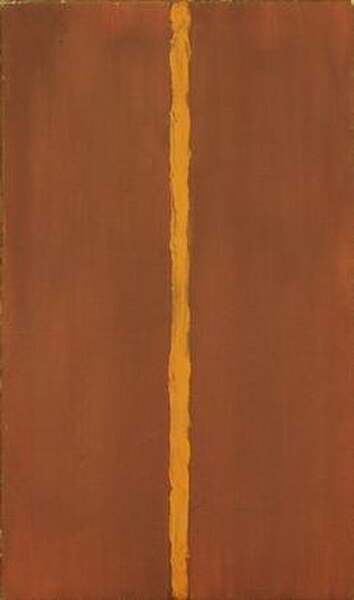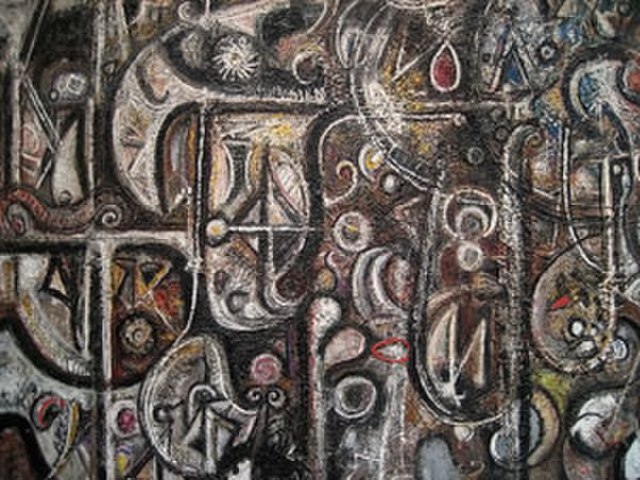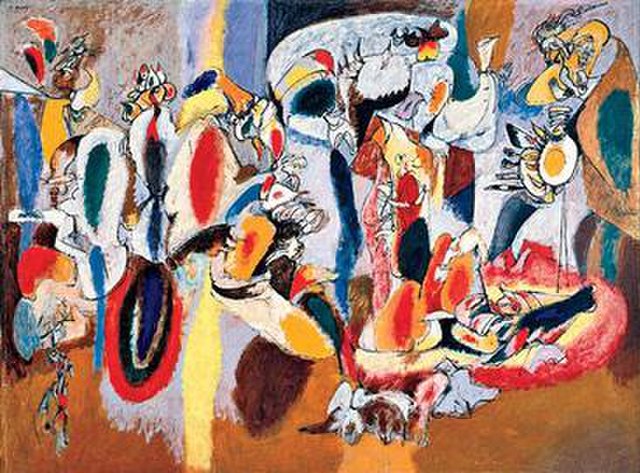Willem de Kooning was a Dutch-American abstract expressionist artist. Born in Rotterdam, in the Netherlands, he moved to the United States in 1926, becoming an American citizen in 1962. In 1943, he married painter Elaine Fried.
De Kooning in his studio in 1961
Plaque affixed on de Kooning's house of birth in Rotterdam, Netherlands
Mural by de Kooning at the Hall of Pharmacy, 1939 New York World's Fair
De Kooning in 1968
Abstract expressionism in the United States emerged as a distinct art movement in the immediate aftermath of World War II and gained mainstream acceptance in the 1950s, a shift from the American social realism of the 1930s influenced by the Great Depression and Mexican muralists. The term was first applied to American art in 1946 by the art critic Robert Coates. Key figures in the New York School, which was the epicenter of this movement, included such artists as Arshile Gorky, Jackson Pollock, Franz Kline, Mark Rothko, Norman Lewis, Willem de Kooning, Adolph Gottlieb, Clyfford Still, Robert Motherwell and Theodoros Stamos among others.
David Smith, Cubi VI (1963), Israel Museum, Jerusalem. David Smith was one of the most influential American sculptors of the 20th century.
Barnett Newman, Onement 1, 1948. During the 1940s Barnett Newman wrote several articles about the new American painting.
Richard Pousette-Dart, Symphony No. 1, The Transcendental, 1941–42
Arshile Gorky, The Liver is the Cock's Comb (1944), oil on canvas, 731⁄4 × 98" (186 × 249 cm) Albright–Knox Art Gallery, Buffalo, New York. Gorky was an Armenian-born American painter who had a seminal influence on abstract expressionism. De Kooning said: "I met a lot of artists — but then I met Gorky... He had an extraordinary gift for hitting the nail on the head; remarkable. So I immediately attached myself to him and we became very good friends."








